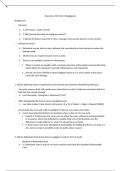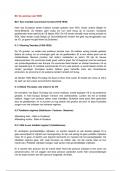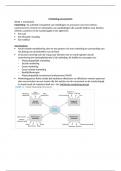Class notes
Metabolic Biochemistry
- Institution
- McGill University (Mcgillu)
This is the whole class notes for metabolic biochemistry. Some of the concepts it contains are: Glycolysis, Citric Acid Cycle/Kreb's cycle, Oxidative phosphorylation, Electron transport chain, Ketone bodies, Lipolysis, lipid synthesis, purine & pyrimidine synthesis & more.
[Show more]












